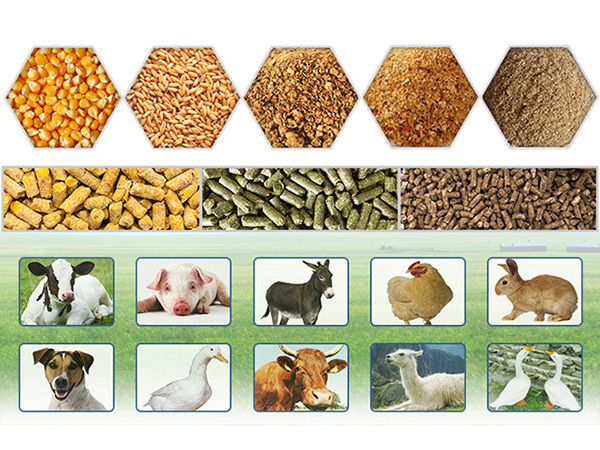
Large-scale price increase! Accelerated reshuffle of the feed industry under the "Anti-resistance Order"
2021-03-30
Since the beginning of this month, nearly 20 enterprises such as New Hope, Zhengbang and Dabei Nong have issued the feed price increase notice again, with an average increase of 75 to 100 yuan per ton. In June and July, many feed enterprises have experienced two price increases. Feed prices were adjusted three times in three months, up nearly 15%. Why is there such intensive price adjustment in the feed industry?

Generally, the feed produced by the factory is mainly divided into three types: formula feed, premixed feed and concentrated feed. Among them, formula feed is the main force of production and sales. After corn and soybean meal are added in advance, farmers can feed directly after purchasing, while premixed feed and concentrated feed can only be used after farmers add corn and soybean meal.
During this period, the price of formula feed is rising. This year, formula feed has undergone four price adjustments, including three price increases and one price reduction. The overall price increase is about 100 to 200 yuan per ton, and it may reach 300 yuan per ton according to different categories.
The main reason for the price rise of formula feed is the price rise of raw materials. Since March, the price of corn has risen sharply. Corn futures rose from 1920 yuan per ton to around 2300 yuan, up nearly 20%, hitting a new high in four years.
In addition to corn, the prices of rice bran, bran and other auxiliary materials have also increased significantly. The price of bran rose to 1900 yuan per ton from 1400 yuan at the beginning of the year. However, although the price of raw materials has generally increased by more than 20%, the price of feed has increased by less than 15%. This is mainly because downstream farmers are more sensitive to the price, and feed factories compete for users.
From July 1, 2020, the national feed production enterprises will stop producing commercial feeds containing growth-promoting drug feed additives (antibiotics). The implementation of the anti epidemic order has generally affected the breeding industry chain, and the concentration of the feed industry that has been eliminated and upgraded will be further improved. For the pig breeding industry that is in the climbing stage of capacity recovery, the comprehensive anti epidemic of feed is a new round of challenges after the African swine plague and the COVID-19 epidemic. On the other hand, the application of antibiotics in the process of feed production and breeding is a double-edged sword. Excessive application has led to its increasingly prominent negative impact on public food safety and the natural environment. The prohibition of feed resistance and breeding resistance has become an inevitable trend in the development of international animal husbandry, the only way to ensure food safety, and also an inevitable requirement to enhance the international competitiveness of Chinese agricultural and animal husbandry enterprises and livestock products.
The use of antibiotics in feed is prohibited. It is not difficult for feed producers to give up antibiotics. The difficulty lies in how to develop and produce high-quality, nutritionally accurate, and anti-biotic substitute new feed according to the needs of the breeding end. Several insiders told reporters that the research and development capacity and capacity scale of high-quality feed will determine whether feed enterprises can survive and grow in this round of industrial upgrading and reshuffle.
Previous Page:
2021
/
03-30
Category:
Industry News
Related information—


